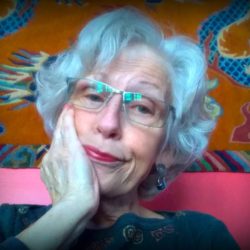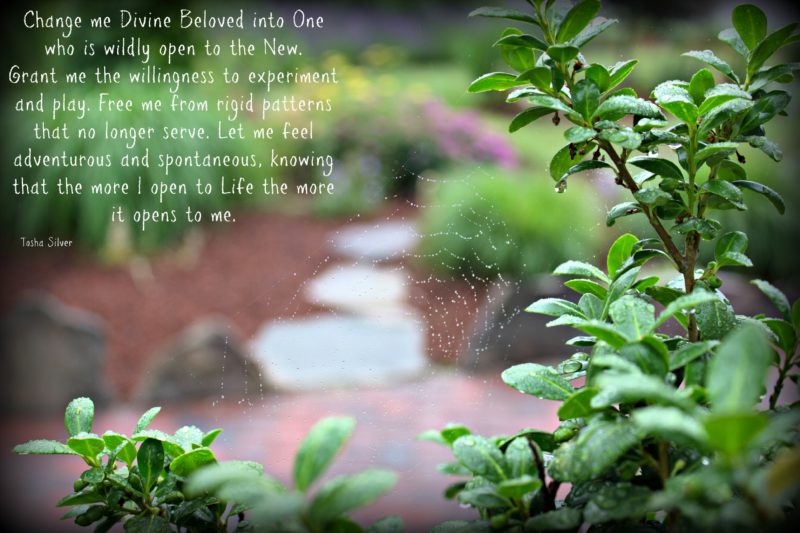A long time ago, I figured out there were two kinds of pain—educated pain and ignorant pain. Ignorant pain is the pain that you’re in and you don’t know why–it seems to just have happened as some random act of Fate. Educated pain is what you get when you know what you’ve done to create the pain and you did it anyway!

Oh well…
It’s all pain but somehow educated pain seems preferable to ignorant pain. As a result of this belief, I’ve spent a lot of time trying to ‘educate’ my pain. Today I still have pain but I know the landscape so much better and can navigate my way through without as much wreckage as when I was ignorant of the sources of my pain. It’s been a long process and I can report that getting educated on my pain has been worth it.
So, what was the process to move from ignorant to educated in my experience of pain? Before I could make any progress in getting clear, I had to develop a language of terms for pain because it was all just one big lump of feelings I wanted to flee. I didn’t have the language nor the insight to say whether the pain I was feeling was hurt, sadness, fear, remorse, guilt, regret or something else. I just wanted all the pain to go away and sought many chemical and behavioral ways to numb the pain until they no longer worked and caused more pain. Then I started reading a lot of self-help books and joining a lot of self-help groups. Both helped me build a language for pain and a sense that I wasn’t alone in my experience. But I fell into the trap of thinking that intellectual understanding was enough. I didn’t realize that by labeling the emotion and ‘rationalizing’ it that I was actually disconnecting from feeling it.
Buried Alive
In naming my feelings and understanding why and how I felt as I did, I was able to “package and store” the experience that had caused the feelings…in my head. But that’s not where feelings live! They live in the body and in the parts of our brain that aren’t part of our cortical executive function, the function that gives us understanding. So, all my hard-won understanding did was bury my feelings alive where I couldn’t find them…in the body. I suppose that would have been fine if I was some kind of a landfill dump site….but even that might reach toxic levels. The other problem with feelings that have been ‘buried alive’ is that they can blindside us in the present—they don’t stay buried. Buried feelings may show up when we find ourselves reacting or overreacting in a current relationship or situation in ways that don’t make sense, or when we find ourselves suddenly depressed and feeling hopeless.
A new body of work about the long term health effects of emotional trauma is emerging in the field of Adverse Childhood Experience (ACE) as reported by Bessel Van der Kerk in The Body Keeps the Score. Not only may you experience delayed emotional responses to previous trauma that has been ‘buried alive’ but it is likely to have long term effects on your health.
Feelings need to be felt and expressed in ways that are cathartic and healing. Feelings need to be found and released through expression. Understanding can come later, or may never come, but feelings must be expressed for us to be physically and emotionally healthy. I didn’t know about healthy emotional release so I intellectualized and buried my feelings and wondered why pain kept coming back. And my range of emotional response was stunted because the only feeling I saw expressed was anger. I didn’t have conscious access to feelings like hurt, sadness and fear so anger became the bucket for all feelings…like many others have discovered.
As a society, we don’t have permission to express feelings as adults. We’ve built a rational world where feelings are to be suppressed or managed so that they’re not ‘messy’ and won’t make anyone uncomfortable. (Try crying loudly in public and see how quickly people run away!) We should grieve like the First Lady, Jacqueline Kennedy, with dignity and restraint. I tried to remember Jackie O when I received the notice that my fiancé was MIA and presumed dead in Viet Nam…didn’t work for me. I howled and sobbed and was sure I couldn’t survive the pain. And that made everyone very uncomfortable so I turned my grief to anger. I know I’m not the first person to do that nor will I be the last. I’ve written about what’s good about anger before so I won’t go there now. But this was a lump of pain I never was able to make sense of, to rationalize, to intellectualize. That’s when I learned about the other kind of pain in life, the pain you learn to live with when you have no understanding, only the hope of acceptance. For some pain there is no “why”, only the pain. For some losses, there is nothing but the grief. Trying to make sense of it will exhaust you and serve no one.
Atlas of Emotions
We are making progress though. Many people now understand that there is something called Emotional Intelligence and that it’s important. Matter of fact, I’ve been doing training and coaching around emotional intelligence in the workplace for the past 20 years (mainly so I could keep learning). Dan Goleman popularized the concept in his book, Emotional Intelligence and since then a whole body of work around emotional understanding, emotional self-regulation and emotional awareness of others has emerged. It’s no longer taboo to speak of emotions in the workplace. In fact, we are being to define a whole new category of work as emotional labor.
Recently, a colleague directed me to the Atlas of Emotions, a wonderful graphic website built on the work of Paul Eckman, in response to a suggestion by the Dalai Lama. I was familiar with Eckman’s work on microexpressions from a favorite show, Lie to Me, and other research I had done. This colorful graphic display is a great dialogue tool for a beginning discussion on the range of possible emotions and how to recognize them in ourselves and others.
Today, I’m well educated on emotion and recognize a wide range of emotions in myself and others. Life is definitely richer for it! However, I didn’t achieve my original goal…making life pain-free. That was a misguided delusion of my youth…and one I’m glad I didn’t achieve. My capacity for joy is directly proportional to my capacity for sorrow. And I would not won’t to lose the depth of compassion I have developed over a lifetime of listening to pain, my own and those with whom I have been privileged to share deep dialogue
